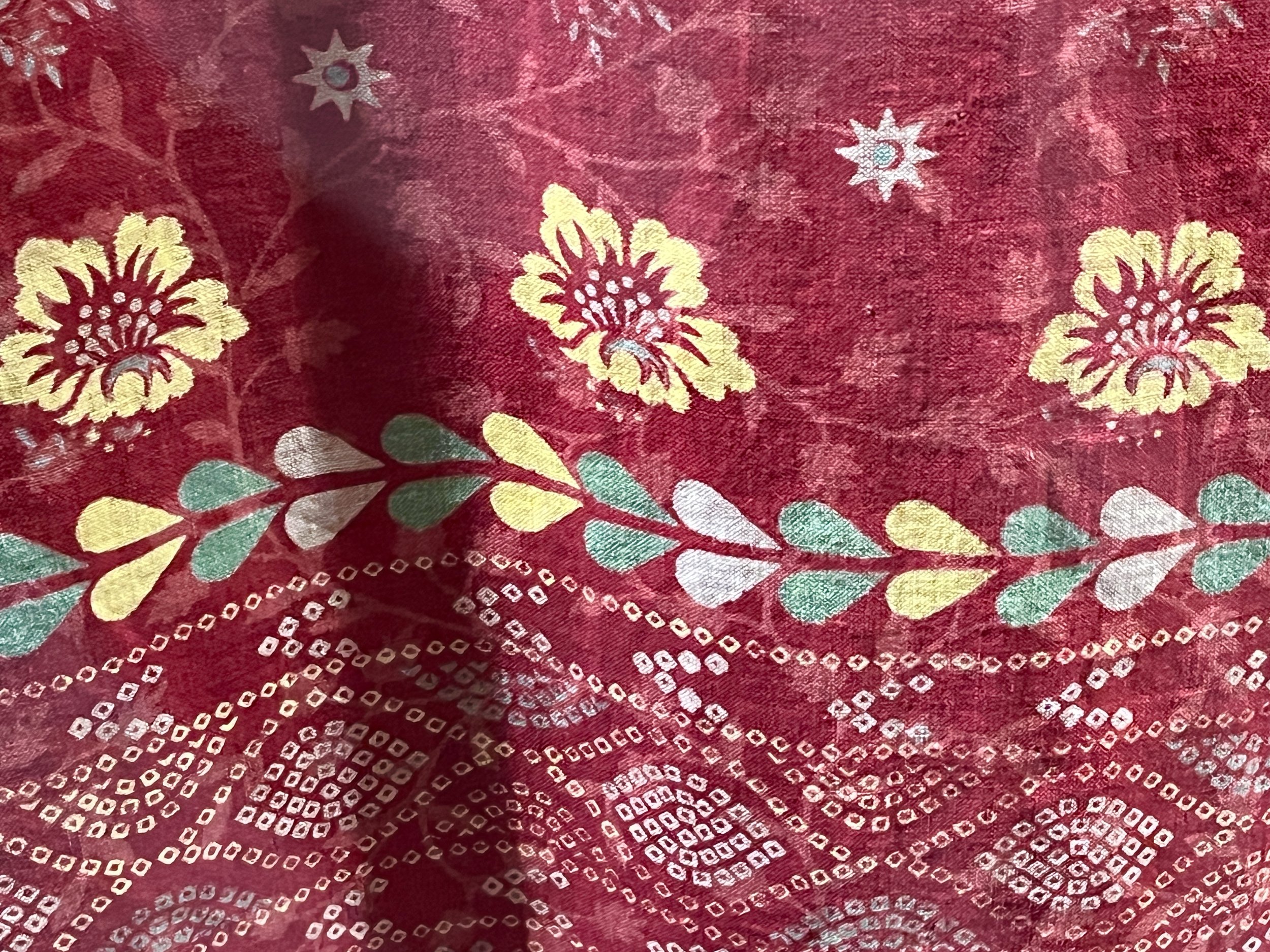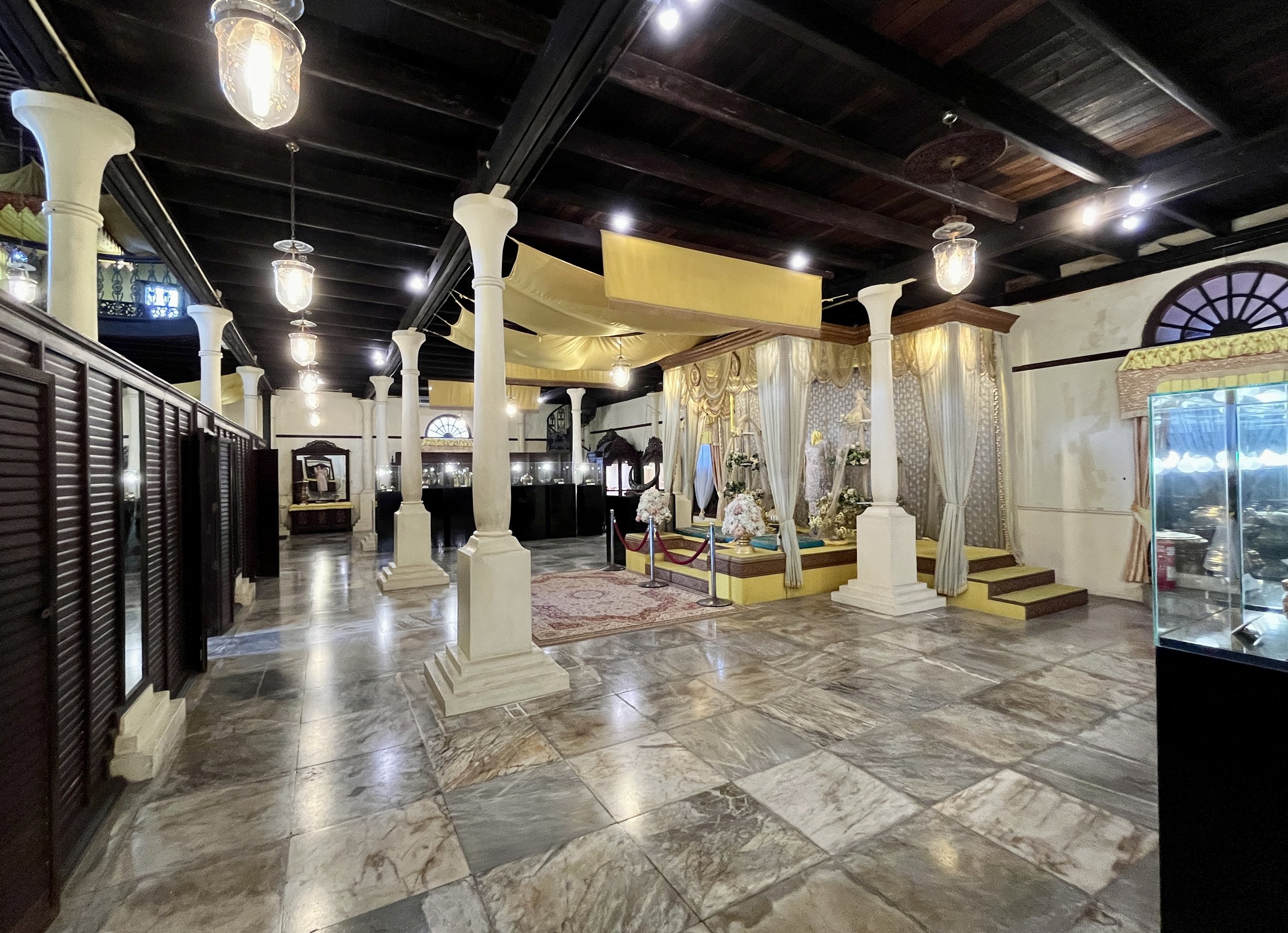Per wikipedia:
Jahar Palace was built in 1855 by Sultan Muhammad II of Kelantan for his grandson Raja Bendahara Long Kundor. The palace has a pentagon-shaped porte-cochère with the first floor balcony from which members of the royal family could watch ceremonies held in front of the palace. It was named after a jahar (flame of the forest) tree which was growing on the grounds at the time.
That’s . . . not quite right. A house was built caddy-corner to the 1844 Grand Palace (still used for official ceremonies, and not open to the public) in 1855 as the “flower making palace,” where precious silver and gold trees were made to pay annual tribute to Siam. In 1887, the current Jahar Palace was built directly in front of it.
The story of how Sultan Muhammad II came to the Kelantan throne is a little interesting: following his uncle’s death, he was one of three contenders. The first was King Treasurer of Banggul (Phraya Banggul/Phra Bidaksha) Long Jenal bin Paduka Sri Sultan Long Yunus, the oldest living brother of Sultan Muhammad I, already an old man and widely considered a placeholder until either the future Muhammad II (whom he considered his heir), or his main opponent, Raja Kampung Laut Long Muhammad (Tuan Besar) bin Raja Muda Ismail, came out on top. So, they dutifully started a war . . . but none of them took it seriously. 😂
In the book Kisah Pelayaran Abdullah Munsyi to Kelantan which was published in 1838 , Munshi Abdullah recounted the state of this civil war:
Every day, the King Treasurer's army will fire their muskets (guns) towards the King of Kampung Laut's fort. The King of Kampung Laut will then respond with only bullets from his own rifle. By noon, both parties were tired and hungry, so they stop for lunch. The battle then resumes for an hour or two, after which it is time for tea. A truce is called and both sides cease from their battlefields and resume the conflict the next day. And the siege continues.
When Munshi Abdullah asked the elderly Long Jenal why he wasn’t really trying to win, for example by ordering a tunnel dug under the Kampung Laut fort and blowing it up? he replied:
"Ah, if I had done that, then I might have killed some people in the camp of the King of the Sea Village. You know, we know each other and our soldiers know each other. It would be impolite and improper to start a bloodshed in which both sides will suffer losses."
Eventually both sides applied to the King of Siam (Rama III) for help; Long Jenal was told to stay in Kelantan and quite literally hold down the fort; Long Senik was ordered by Rama III to visit the Governor of Songkhla, and told there he would be made Sultan Muhammad II of Kelantan; Tuan Besar was invited to Bangkok, and told by Rama III personally that he would have to give up his claims to Kelantan, but would instead be made the King of Pattani. Amusingly, Pattani already had a king, who was in turn shuffled off and made King of Jering. The transition process took around 5 years, with Long Jenal abdicating in favor of Long Senik in 1837 (when his reign as Sultan Muhammad II officially began) and Tuan Besar finally and fully packing off to Pattani in 1842.
Sultan Muhammad II was succeeded by his son Sultan Ahmad Tengah in 1886, who in turn moved into the Grand Palace and gave Istana Jahar to his own son and heir, Long Kundur, the future Sultan Muhammad III, in 1887. Unfortunately, Long Kundur was already quite ill, so his younger brother, the future Sultan Mansur, was simultaneously appointed Long Kundur’s heir and regent. Sultan Ahmad Tengah died in 1889, just three years into his reign; Sultan Muhammad III’s reign was even shorter, ending with his death, aged just 44, in 1891. Sultan Mansur lasted on the throne 8 years; not long, but not short in those days.
The royal family continued to use the palace as a residence on and off through the 1950s, but less and less after the more modern Batu palace was built within easy walking distance in 1939. Today, both palaces are museums housing various antique and vintage personal effects of the Kelentan royals.
The collection at Jahar Palace is far superior, with excellent examples of textiles, jewelry, household effects, etc. There’s also a large array of vintage weapons, some cars, some royal canoes . . . really a bit of everything.
I found the explanatory placards unsatisfactory, at least in English, but they gave me a jumping off point for keyword researching the things that interest me, like the different types of textiles.
The two checked textiles are punca patong cloth, so called because the end, or ‘root’ is cut off. It can be woven in either cotton or silk, and stripes and checks are the most common patterns. It is usually used as a sash by men and a kembang, or wrap skirt, by women.
Pelangi Cloth
Screen Batik
Punca Patong
Batik
Songket
Limar
The inside of the palace is very interesting, architecturally. The back house is in traditional Malay style, though quite large, even grand; the front house combines Malay and Western styles, with a pillared marble ground floor, and a wooden upstairs, subdivided with panels and carvings. It’s unfortunately a bit difficult to tell which ‘rooms’ are original, and which were constructed for ease of creating the usual boring exhibits found in Malay museums venerating the marriage and bedding ceremonies. It was clear to me that many layouts were unnatural; with so many brass pedestal dishes so placed, for example, that there is no room for people to sit and eat, forget walk about serving. Likewise, though I am unfamiliar with royal Muslim Malay marriages of a century ago, I presume the royal bedroom housed one beautifully carved bed, and there are currently three packed in side by side simply because the rest of the house has been filled with vitrines.
One thing I hated about the house was the preponderance of yellow polyester. I suppose it’s an attempt to cheaply imitate royal cloth of gold, though I doubt the house was originally decked in such a manner anyway, that’s a rather 1960s/70s new-money concept of ‘royal colors’ . . . it’s something I’ve noticed in multiple museums, and I hate it. I also don’t think it suits the very impressive woodwork.
I also sort of despised the staff here. The museum closes at 4:45, but they lied to me and told me it closed at 4:00, and started chasing me around at 3:00 telling me to hurry up and leave . . . they were also sitting at the entrance smoking and chatting, which is gross. I never want to smell cigarette smoke inside a museum. Still, the place is certainly worth a visit, and were I ever again in Kelentan I would go back.







































































































































































